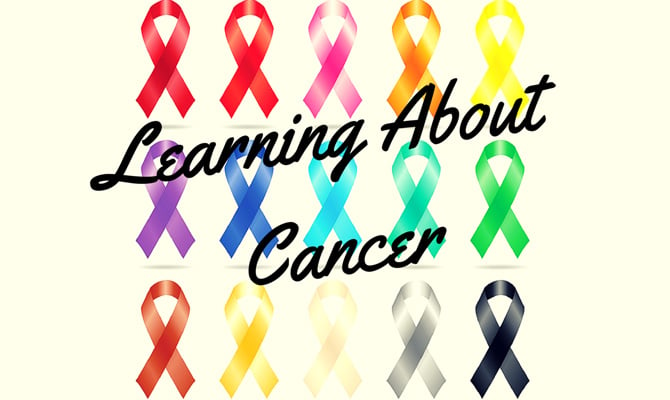What is cervical cancer? • Cervical cancer is a malignant tumour arising from cells from cervix (the bottom part or neck of the womb or uterus) • Cervical cancer happens when normal cells in the cervix change into abnormal cells and grow out of control • It is the second most common cancer and fourth most common cause of death in women in Malaysia. • The overall incidence rate is 19.7 per 100,000 women; however it differs by ethnic group • Most women whose cervical cancer is found and treated early do well. Who are in a higher risk to acquire cervical cancer? • Human papilloma virus (HPV) infection (may double the risk of cervical cancer) • Smoking • Having multiple sexual partners. • Have a history of sexually transmitted diseases (STDs). • People with weak immune system (or immunocompromised). Is there any way to prevent cervical cancer? • Most common form of cervical cancer starts with pre-cancerous changes • Prevention is possible either treating pre-cancers or to prevent the pre-cancers • The Pap test (or Pap smear) and the human papilloma virus (HPV) test are used for this • Since 2006 in Malaysia we have launched the cervical cancer vaccine which can protect women from the HPV (Human Papilloma Virus) that can cause cervical cancer. • Women worldwide are encouraged to get vaccinated because it plays a key role in strengthening your immunity to fight these viruses. • The Malaysian Ministry of Health is giving this vaccination out school girls of certain ages for free What are the symptoms of cervical cancer? In the early stages, cervical cancer might not cause any symptoms. In the later phase of the disease, the following symptoms might develop: • Vaginal bleeding or spotting in between menstrual cycles • Vaginal bleeding after sexual intercourse • Vaginal bleeding after menopause • Watery, mucus-like or pus discharge from the vagina • Pain during intercourse In severe conditions, the presentation might be as follows: • Back or hip pain. • Decrease in urine volume, pain during urination or passing blood in the urine. • Difficulty in passing motion/defaecating. How is cervical cancer diagnosed? • The Pap smear (Papanicolau test) is the most basic and widely applied screening test for cervical cancer in the world used to screen women for cervical cancer. • It involves collection of cells from the cervix using a small brush taken gently from cervix and the cells are examined under microscope to see if they are abnormal. • When a woman receives abnormal Pap smear results, a colposcopy is recommended. • It is an examination of using powerful lighted binocular microscope to magnify cervix to pinpoint the origin of the pre cancer cells and treat the patient on the spot. What are the available treatment options for cervical cancer? Depending on the severity of the illness, cervical cancer can be treated in 3 ways: • Surgery – Removing the cervix, uterus and the upper part of the vagina (radical hysterectomy) • Radiotherapy – Killing the cancerous cells by radiation (high energy x-rays) • Chemotherapy – Medicine to kill cancerous cells. Usually given together with radiotherapy. What are the prognosis /survival rate of each stage of cervical cancer? The stage of a cancer tells the doctor how far it has spread. The usual stages used for cervical cancer are from 1 to 4. Each of these stages are subdivided into further grouping of A and B. The 5-year survival rate refers to the percentage of patients who live at least 5 years after their cancer is diagnosed. According to the latest International Federation of Gynaecology and Obstetrics (FIGO) data available, the stages of cervical cancer and its 5-year survival rate are as below:
|
FIGO STAGE |
5 years (%) |
FIGO STAGE |
5 years (%) |
|
IA1 |
97.5 |
IIB |
65.8 |
|
IA2 |
94.8 |
IIIA |
39.7 |
|
IB1 |
89.1 |
IIIB |
41.5 |
|
IB2 |
75.7 |
IVA |
22.0 |
|
IIA |
73.4 |
IVB |
9.3 |
What are the cervical cancer support groups in Malaysia? For more information about cervical cancer, you can refer to the support groups below: • National Cancer Society Malaysia (www.cancer.org.my) • Ministry of Health of Malaysia (www.moh.gov.my) • Ministry of Women Family and Community Development of Malaysia (www.kpwkm.gov.my) • National Population and Family Development Board of Malaysia (www.lppkn.gov.my) Campaigns or movements that are currently underway are: • Power over Cervical Cancer (http://www.pocc.com.my) What are the palliative cervical cancer centres in Malaysia? MALAYSIAN HOSPICE COUNCIL 250A, Jalan Air Itam, 10460 Penang Tel: (604) 228 4140 Fax: (604) 226 4676 http://malaysianhospicecouncil.org/ or http://malaysianhospicecouncil.blogspot.com/ HOSPIS MALAYSIA 2 Jalan 4/96, Off Jalan Sekuci, Taman Sri Bahtera, Jalan Cheras, 56100 Kuala Lumpur Tel: +603 9133 3936 Fax: +603 9133 3941 http://www.hospismalaysia.org/ PALLIATVE CARE ASSOCIATION OF JOHOR BAHRU (PCAJB) 44, Jalan Tun Abdul Razak, Susur 1, 80000 Johor Bahru, Johor Tel: +07 222 9198/ 07 222 8858 http://www.pcajb.com ASSUNTA PALLIATIVE CARE CENTER (AsPACC) 83, Jalan Templer, 46990, Petaling Jaya, Selangor Tel: +603 7931 7298 Fax: +603 7954 3389 http://www.aspacc.org/index.php Prepared by: Gan Kai San, Chua Chong Yee, Semester 9 Students, International Medical University Prof Esha Das Gupta, Department of Internal Medicine, Clinical School, Seremban, International Medical University Nancy Tham, Staff Deanery, Clinical School, International Medical University Dr Nagandla Kavitha, Department of Obstetrics and Gynaecology, Clinical School, Seremban, International Medical University









